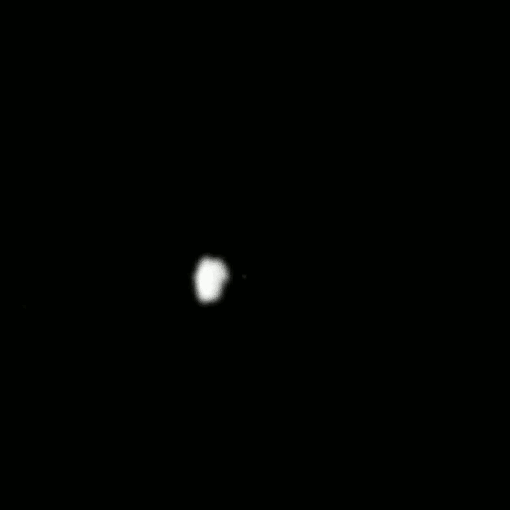Emily Lakdawalla • Jul 10, 2010
Rosetta Lutetia flyby successful; approach images posted; high-res images yet to come
All appears to be going very smoothly on Rosetta through, and after, its flyby today of asteroid (21) Lutetia. Via ESA's live webcast I saw them lose the signal from the spacecraft as expected, and reacquire it at the expected time 35 minutes later, as Rosetta passed through its closest approach to the largest asteroid yet visited by a spacecraft.
During the webcast, they posted several images of the asteroid taken by Rosetta as it approached; the highest-resolution one was taken from a distance of about 80,000 kilometers. The closest-approach images will be taken at a distance of 3162 kilometers, or roughly 25 times closer, so the best pics will show roughly 25 times as much detail! I can't wait to see those. I, personally, will not see them until very late in my evening after I finally return home from a 3-week trip, but you will be able to see them when they are released some time after 21:00 UTC on the Rosetta Blog. And -- for those of you who have been asking -- I will definitely be updating my "asteroids and comets to scale" poster with one of those high res images, once they are released and I have a little time in front of my computer!
In the meantime, what I can say about the approach images is: wow, it's pretty lumpy!

Here's a montage of some of those pics, processed to try to bring out a bit more detail in the brightly sunlit areas. It looks both faceted and cratered, with noticeably raised, almost pointy-peaked crater rims. I don't see obvious albedo markings.

Finally, here's the highest resolution view shown in color. While I'm sure there is yet more careful calibration work to be done to make sure this is the "right" color, it appears red, as it should; objects with ancient surfaces that have been exposed to solar radiation and micrometeoroid damage for a long time tend to be more reflective at longer wavelengths than shorter wavelengths, making them appear red to our eyes.

More images will be released after 21:00 UTC. Via Twitter ESA has already confirmed that OSIRIS has returned some spectacular images; the camera team is now working on processing and readying them for release. They won't be released, though, until after the media distraction of the Uruguay-Germany World Cup match is over. The ESA Webcast will resume at 21:00 UTC, or you can watch the Rosetta Blog for the images.
Support our core enterprises
Your support powers our mission to explore worlds, find life, and defend Earth. You make all the difference when you make a gift. Give today!
Donate

 Explore Worlds
Explore Worlds Find Life
Find Life Defend Earth
Defend Earth

